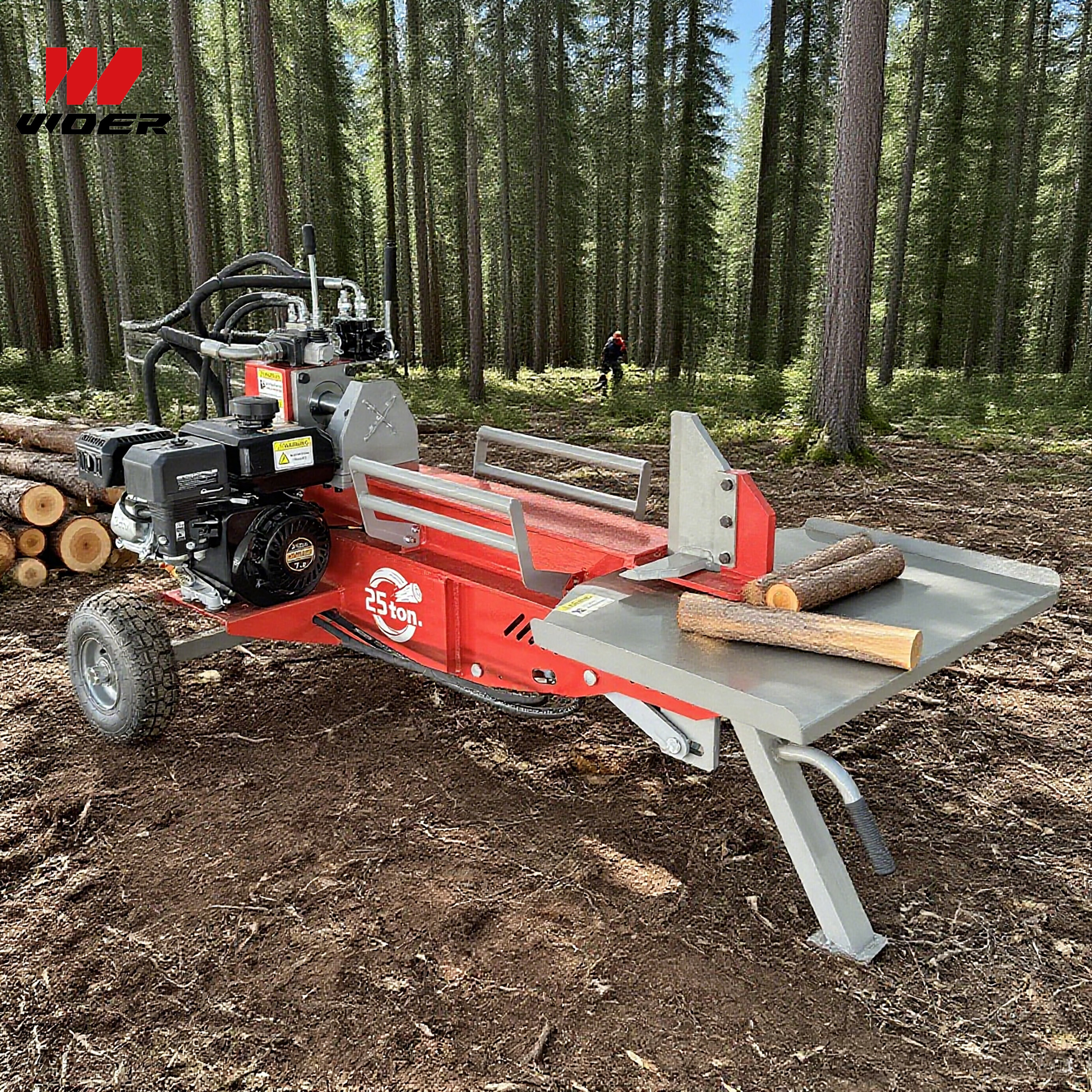Navigation
Contact us
Phone
Message

Power Sources of Wood Splitters – Electric, Hydraulic, and Manual
Q1: What are the main power sources for wood splitters?
A1: Wood splitters are commonly powered by three types of systems: electric motors, hydraulic engines, and manual hand-operated mechanisms. Each has unique advantages for different applications.
Q2: What are the benefits of electric-powered wood splitters?
A2: Electric splitters are quiet, eco-friendly, and ideal for residential or small farm use. They require minimal maintenance and are perfect for indoor or near-home operations.
Q3: What are the drawbacks of electric wood splitters?
A3: Electric splitters are limited by power supply availability and typically have lower splitting force, making them less suitable for large logs or high-volume processing.
Q4: Why are hydraulic wood splitters popular for commercial use?
A4: Hydraulic splitters provide high power and durability, capable of handling large hardwood logs. They are widely used in commercial forestry, large farms, and heavy-duty applications.
Q5: What are the challenges of hydraulic-powered wood splitters?
A5: They require regular maintenance of hydraulic oil, hoses, and pumps. Hydraulic systems are also heavier and less portable compared to electric models.
Q6: What is the role of manual wood splitters on farms or homes?
A6: Manual splitters are affordable, lightweight, and portable. They are suitable for low-volume use, such as small firewood preparation, camping, or occasional splitting tasks.
Q7: How do manual splitters compare with electric or hydraulic models?
A7: While manual splitters require more physical effort, they are cost-effective and maintenance-free, making them practical for users with minimal wood-splitting needs.
Q8: Which power source is best for small farms?
A8: Electric splitters are recommended for small farms due to their efficiency, low noise, and ease of use. Portable models are especially suitable for seasonal firewood preparation.
Q9: Which type is most efficient for commercial forestry?
A9: Hydraulic splitters are the most efficient for high-volume, heavy-duty operations, capable of handling tough hardwoods and continuous workloads.
Q10: How should users choose between electric, hydraulic, and manual splitters?
A10: The choice depends on workload, log type, and usage frequency. Small-scale users may prefer electric or manual splitters, while large-scale or commercial operations benefit most from hydraulic systems.

This stunning beach house property is a true oasis, nestled in a serene coastal community with direct access to the beach.
Contact
West Street, Melbourne Victoria 3000 Australia